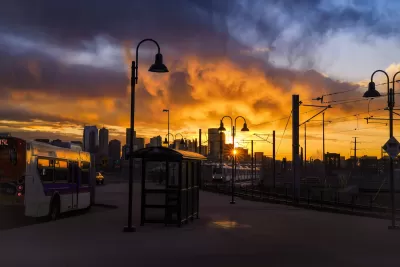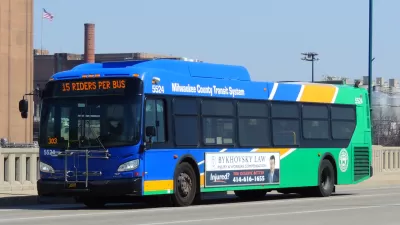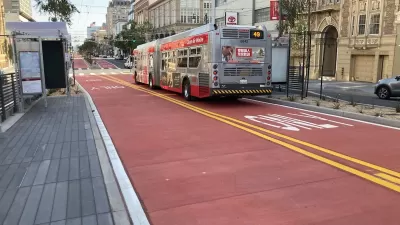More cities are leaning into bus rapid transit, a faster, cheaper alternative to light rail-based rapid transit systems.

Writing for Colorado Public Radio, Nathaniel Minor describes how the growing bus rapid transit (BRT) system in Minneapolis is inspiring local leaders from Denver. Denver is planning its own BRT system, dubbed the Lynx, which could be operational by 2030.
Some notable characteristics of Minneapolis’s BRT system include full-fledged stations with floor-level boarding, ticket machines and validators, seating, and shelter. Stations are spaced farther apart than typical local bus lines to reduce travel times. “Those improvements, along with other infrastructure changes, including technology that gives buses priority at intersections, all combine to speed up BRT buses up to 25 percent over old local routes.”
Notably, the BRT lines don’t have full dedicated lanes throughout, in part due to cost and the resistance to removing vehicle travel lanes. “In Denver, much of the East Colfax BRT line will be much closer to a bona fide bus rapid transit system compared to the Twin Cities’ lines.”
In Minneapolis, ridership went up by more than 30 percent on the city’s first two arterial bus lines. “And while general transit ridership in Minneapolis–Saint Paul has suffered since the pandemic, ridership on Metro Transit’s arterial BRT lines have held relatively steady.”
“The Denver region’s turn toward buses comes after RTD has spent billions of dollars over the last two decades on rail lines,” Minor explains. The shift will focus more transit service on dense urban corridors and prioritize underserved areas.
FULL STORY: For a peek at Denver’s rapid bus future, look to Minneapolis

Planetizen Federal Action Tracker
A weekly monitor of how Trump’s orders and actions are impacting planners and planning in America.

Maui's Vacation Rental Debate Turns Ugly
Verbal attacks, misinformation campaigns and fistfights plague a high-stakes debate to convert thousands of vacation rentals into long-term housing.

Restaurant Patios Were a Pandemic Win — Why Were They so Hard to Keep?
Social distancing requirements and changes in travel patterns prompted cities to pilot new uses for street and sidewalk space. Then it got complicated.

In California Battle of Housing vs. Environment, Housing Just Won
A new state law significantly limits the power of CEQA, an environmental review law that served as a powerful tool for blocking new development.

Boulder Eliminates Parking Minimums Citywide
Officials estimate the cost of building a single underground parking space at up to $100,000.

Orange County, Florida Adopts Largest US “Sprawl Repair” Code
The ‘Orange Code’ seeks to rectify decades of sprawl-inducing, car-oriented development.
Urban Design for Planners 1: Software Tools
This six-course series explores essential urban design concepts using open source software and equips planners with the tools they need to participate fully in the urban design process.
Planning for Universal Design
Learn the tools for implementing Universal Design in planning regulations.
Heyer Gruel & Associates PA
JM Goldson LLC
Custer County Colorado
City of Camden Redevelopment Agency
City of Astoria
Transportation Research & Education Center (TREC) at Portland State University
Jefferson Parish Government
Camden Redevelopment Agency
City of Claremont





























